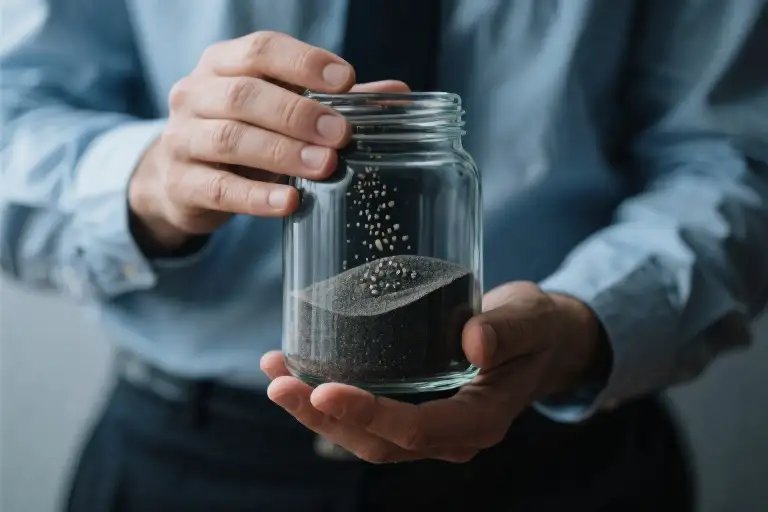That seventh missed call flashing on your phone screen – the one that made your stomach drop before you even swiped to answer. It wasn’t the first time, but something about that moment made the truth click into place like a heavy lock turning. The racing heartbeat, the dry mouth, the way your fingers trembled just hovering over the screen. Your body had been sounding alarms for months, maybe years.
Research shows 85% of narcissistic abuse survivors initially dismiss their own instincts, convinced they’re overreacting to what others call ‘normal relationship struggles.’ That statistic isn’t meant to shame – it’s proof of how thoroughly these relationships rewire our perception. The very fact you’re reading this means you’ve already done the hardest part: recognizing the smoke before the fire consumed you completely.
What comes next isn’t about rehashing the pain (though we’ll honor that when needed). This is your roadmap through three crucial phases: understanding their playbook (so their tricks lose power), navigating the non-linear healing journey (with practical tools for each stage), and ultimately reclaiming the life they swore you’d never have without them. We’ll explore the neuroscience behind why leaving felt impossible, how to spot progress when healing feels stagnant, and most importantly – how to use their arrogance as fuel for your recovery.
The narcissist’s greatest miscalculation was assuming you’d never reach this point. Their verbal grenades (‘You’ll never do better’), financial traps, spiritual manipulation – all designed to make you internalize their warped reality. But here you are, phone still in hand, choosing to investigate that gnawing feeling instead of silencing it again. That’s not weakness; that’s the beginning of a strength they never saw coming.
In the coming sections, we’ll dismantle their tactics piece by piece. You’ll learn to identify the five types of abuse (including the rarely-discussed spiritual dimension), recognize where you are in the healing process using a trauma-informed self-assessment, and gain scripts for high-stakes moments like hoovering attempts. Most crucially, you’ll see real recovery timelines from people who once stood exactly where you are now – complete with their messy setbacks and eventual breakthroughs.
For now, just know this: that seventh call went unanswered for a reason. Your survival instincts are coming back online. Let’s strengthen them together.
How They Trapped You: The Five Faces of Narcissistic Abuse
That moment when the fog lifted – when you finally saw the patterns you couldn’t unsee. The backhanded compliments that eroded your confidence. The financial control disguised as ‘helping.’ The sleep deprivation from circular arguments that always ended with you apologizing. Narcissists don’t operate through obvious brutality; their abuse comes wrapped in plausible deniability, making you question whether you’re just ‘being too sensitive.’ Let’s dismantle their playbook together.
1. Verbal Abuse: The Slow Poison
You remember the jokes that weren’t funny, the constant ‘teasing’ about your appearance or intelligence. Research from the Journal of Interpersonal Violence shows victims hear an average of 23 put-downs weekly, often disguised as:
- ‘I’m just being honest’
- ‘You know I say this because I love you’
- ‘Don’t be so dramatic’
These aren’t occasional slips – they’re systematic erosion of your self-worth. Like water shaping stone, the cumulative effect leaves you flinching at raised voices years later.
2. Financial Abuse: Invisible Handcuffs
That ‘joint account’ you never had access to. The career opportunities sabotaged. The credit cards maxed out in your name. A 2023 Urban Institute study found 99% of domestic violence cases involve financial control. Narcissists know money equals freedom – which is why they:
- Create dependency (‘Let me handle the bills’)
- Punish financial independence (‘You’re selfish for wanting to work’)
- Use money as reward/punishment (Sudden gifts after abuse cycles)
3. Mental Abuse: The Gaslighting Maze
‘That never happened.’ ‘You’re remembering wrong.’ Gaslighting isn’t just lying – it’s making you distrust your own mind. Victims develop what psychologists call ‘toxic doubt,’ constantly second-guessing:
- Your memory
- Your perceptions
- Your sanity
This creates the perfect environment for control – when you can’t trust yourself, you’ll rely on their version of reality.
4. Physical Abuse: Not Always Bruises
The sleep deprivation. The ‘accidental’ shoves. The strategic invasions of personal space. Many survivors don’t recognize physical abuse because it doesn’t leave marks. Watch for:
- Property destruction (Breaking your belongings)
- Sleep manipulation (Keeping you awake for arguments)
- Coercive control (Blocking doorways, monitoring movements)
5. Spiritual Abuse: Soul Theft (The Most Overlooked Dimension)
That twisted moment when they used your faith against you – quoting scriptures about submission, calling your boundaries ‘unforgiving,’ or weaponizing your values. Spiritual abuse leaves unique scars because it attacks:
- Your sense of meaning
- Your connection to hope
- Your trust in divine protection
A 2022 Baylor University study found 68% of religious abuse victims subsequently struggle with existential anxiety.
The Neuroscience Behind the Trap
Why is this so hard to escape? Brain scans show narcissistic relationships activate the same dopamine pathways as gambling addiction. The intermittent reinforcement – occasional kindness amid cruelty – creates what psychologists call ‘trauma bonding.’ Your brain literally rewires to:
- Crave their validation
- Minimize abuse to preserve the connection
- Interpret breadcrumbs as feasts
Your Personal Abuse Inventory
Let’s make the invisible visible. Check any experiences you recognize:
[ ] Constant criticism framed as ‘helpful advice’
[ ] Being punished for successes (silent treatment after promotions)
[ ] Religious texts used to justify control
[ ] Unexplained physical symptoms (migraines, digestive issues)
[ ] Financial decisions requiring their approval
[ ] Friends/family expressing concern you dismissed
[ ] Apologizing for things that weren’t your fault
[ ] Feeling addicted to their approval
If you checked multiple boxes, understand this: what happened to you was real, it was calculated, and most importantly – it wasn’t your fault. The narcissist’s greatest trick was making you believe you were the problem while they held all the power.
Tomorrow’s work begins where today’s awareness ends. In the next section, we’ll map your healing progress – because understanding where you are is the first step toward where you’re going.
Healing Doesn’t Follow a Straight Path
That moment when you first recognized the patterns—the love-bombing, the gaslighting, the sudden withdrawals—marked the beginning of your recovery journey. What comes next isn’t the predictable upward climb many expect, but rather a series of breakthroughs and setbacks that ultimately lead to transformation. Understanding this nonlinear process helps normalize what you’re experiencing.
Measuring Your Progress with the PTGI-10 Scale
The Post-Traumatic Growth Inventory (PTGI-10) gives you a framework to track subtle shifts that matter. Unlike clinical assessments focusing solely on symptom reduction, this adapted scale measures five growth areas:
- New Possibilities (“I’m discovering interests I suppressed”)
- Relating to Others (“Setting boundaries feels less terrifying”)
- Personal Strength (“Yesterday I didn’t check their social media”)
- Spiritual Change (“The guilt they installed is fading”)
- Appreciation of Life (“Small pleasures feel accessible again”)
Scoring Guide:
- 0-20: Early stabilization phase (focus on safety planning)
- 21-35: Active rebuilding (practice boundary-setting daily)
- 36-50: Integration stage (help others with similar experiences)
Take the assessment quarterly. Progress often appears in unexpected areas—maybe you’ll score higher in “Personal Strength” before noticing changes in relationships. That’s completely normal.
The Three Recovery Patterns You Should Know
- The U-Shaped Journey (Common in the first year)
- Initial relief after leaving → Intense “withdrawal” symptoms around month 3 → Gradual stabilization by month 9
- What helps: Track micro-wins (e.g., “Went 48 hours without ruminating”) during the dip
- The Zigzag Pattern (Frequent among co-parenting survivors)
- Steady progress interrupted by necessary contact (custody exchanges, legal matters)
- What helps: Designate recovery days after high-contact events (special meals, extra therapy sessions)
- The Spiral Path (Most long-term survivors experience this)
- Revisiting similar challenges at higher levels of understanding
- What helps: Compare current struggles to past ones (“Last year this would have destroyed me—now it’s just inconvenient”)
Emma’s Healing Journal: A Real-Life Example
Month 1: “Cried hearing our song at the grocery store. Had to leave my cart and go home. Feels like I’ll never stop hurting.”
Month 4: “Our song played today. Finished shopping while humming along. Realized—it’s just a song now.”
Month 8: “Saw someone who looked like them. My heart didn’t race. Noticed I was admiring the stranger’s jacket instead.”
Month 12: “Found old photos while cleaning. Felt sadness, but also pride seeing how far I’ve come. Donated the photos.”
Notice how Emma’s progress wasn’t constant. Some months showed dramatic shifts, others seemed stagnant. The key was her commitment to documenting small changes—something you can start today with a notes app or voice memos.
When Setbacks Feel Like Failures
That week when you:
- Dreamed about them again
- Felt tempted to break no-contact
- Questioned if it was really “that bad”
These aren’t relapses—they’re recalibrations. Your mind tests old neural pathways while building new ones. The fact that you notice these moments proves growth is happening.
Try This: Create a “Then vs. Now” list when doubts arise:
| Then | Now |
|---|---|
| Believed their criticism | Recognize their words reflected their issues |
| Apologized for having needs | Say “This is what I require” without guilt |
Healing from narcissistic abuse resembles rehabbing an injured muscle—you must stress it appropriately to strengthen it. Those days when everything feels raw? They’re proof you’re doing the work, not that it’s not working.
When You Face These Situations Again…
The moment you decided to break free from narcissistic abuse was your first victory. Now comes the real test – maintaining your boundaries when old patterns resurface. You’ll encounter familiar triggers, but this time, you’re armed with awareness and tools they never expected you to have.
Scenario 1: The Hoovering Message
That unexpected text appears – maybe an apology, a casual “how are you,” or even accusations. Your fingers might tremble as you recognize this classic manipulation tactic. Narcissists use hoovering because they genuinely believe you’ll crawl back. Here’s how to rewrite that script:
Three-Tier Response System
- Gentle Boundary (For Low-Risk Contacts)
“I appreciate you reaching out, but I need space to focus on my wellbeing right now.”
- Attach this to a neutral emoji (🌿 or ⚖️) to prevent emotional hooks
- Immediately mute notifications from this contact
- Neutral Gray Rock (When Necessary)
“Got your message. Things are fine here.”
- Use boring language (avoid adjectives/details)
- Wait 24+ hours before replying
- Template perfect for co-parenting situations
- Firm Shutdown (For Persistent Attempts)
“Further contact isn’t healthy for either of us. Please respect this boundary.”
- Send once then block if violated
- Screenshot for documentation
Digital Self-Defense Kit
- 📱 Enable “Filter Unknown Senders” on iPhone
- 📧 Create a separate folder for their emails
- ✉️ Use a temporary email for legal necessities
Remember: Every ignored hoover is another crack in their illusion of control. The seventh time you don’t respond? That’s when their confusion becomes your quiet triumph.
Scenario 2: The Self-Doubt Attack
Out of nowhere, their voice invades your thoughts: “Maybe I was too sensitive… What if they were right?” This is the neurological aftermath of gaslighting – but you can reprogram it.
RAIN Technique (Adapted for Narcissistic Abuse Recovery)
- Recognize the thought as trauma residue, not truth
- Literally say: “This is an abuse echo”
- Allow it to exist without fighting (set timer for 90 seconds)
- The physiological wave will pass
- Investigate its origin
- “When did they first plant this doubt?”
- Nurture your present self
- Place hand on heart: “I trust my current judgment”
Emergency Anchors
- Keep a “Proof File” of:
• Screenshots of their contradictions
• Lists of broken promises
• Friends’ validation texts - When doubt hits, open this before reacting
Scenario 3: Social Anxiety After Isolation
That first birthday party invitation might trigger panic. Narcissists systematically eroded your social confidence – rebuilding it requires strategic exposure.
The 3-Person Reentry Plan
| Week | Goal | Self-Talk Reminder |
|---|---|---|
| 1 | Text 1 safe friend | “I’m relearning connection” |
| 2 | 15-minute coffee with 2 people | “I can leave when I need to” |
| 3 | Group setting (3+ people) | “I’m here to observe, not perform” |
Exit Strategies Always Include:
- 🚗 Your own transportation
- 🕒 Pre-set “I need to go” phrase
- 🧳 Purse/bag kept accessible
What narcissists called “oversensitivity” was actually your survival instinct. That discomfort in crowds? It’s your body remembering danger – and now learning safety.
Your Next Small Win
Choose one scenario that resonates most today. Practice just one technique from it within the next 24 hours. Healing isn’t about perfection – it’s proving to yourself, one choice at a time, that their predictions about you were always wrong.
The Gifts Time Brings
Side-by-Side Healing Journal
That notebook you kept during the darkest days? It’s become one of your most powerful recovery tools. Let’s place your January 15, 2023 entry beside today’s date:
2023 Journal
“7pm – Another night staring at my phone. He promised he’d call after work. I rewrote my text 12 times before sending. Why does everything feel like my fault? Took sleeping pills again.”
2024 Journal
“7pm – Finished my pottery class! Sara from the studio invited our group for tea. Realized I hadn’t thought about him all afternoon until just now – and it didn’t hurt. Made chamomile tea before bed.”
These parallel entries reveal what narcissistic abuse recovery actually looks like. The changes happen gradually, then suddenly. You might not notice daily progress until you see them documented side by side.
Your Brain’s Repair Timeline
Neuroscience confirms what your journal shows – healing follows predictable phases:
graph LR
A[0-3 Months: Survival Mode] --> B[3-6 Months: Emotional Detox]
B --> C[6-12 Months: Neural Rewiring]
C --> D[12-18 Months: Identity Reformation]During the critical 6-18 month window, your brain actively rebuilds:
- Diminishes trauma responses in the amygdala
- Strengthens prefrontal cortex regulation
- Creates new pathways around trauma memories
This explains why month 9 often feels harder than month 3 – you’re not regressing, you’re processing deeper layers.
Milestones That Matter
Check any you’ve reached (even partially):
- [ ] Went 24 hours without obsessive thoughts
- [ ] Deleted old photos/texts
- [ ] Said “no” without justifying
- [ ] Felt genuine joy unrelated to them
- [ ] Recognized a red flag in someone new
- [ ] Dreamt about them without waking distressed
- [ ] Spent holidays peacefully alone
- [ ] Forgot their birthday
These aren’t just checkboxes – each represents neural pathways rewriting. The narcissist swore you’d never reach these points. Every marked box proves them wrong.
The Time Capsule Exercise
- Write a letter to your future self (3/6/12 months ahead)
- Include:
- What still hurts today
- Small wins you might forget
- Questions to ask your future self
- Seal and schedule delivery (use FutureMe.org or physical envelope)
When you receive it, you’ll have living proof of progress no narcissist can deny. Because healing isn’t about forgetting – it’s about outgrowing.
“Time doesn’t heal all wounds; it reveals which wounds were never truly yours to carry.”
Closing Thoughts: Your Journey Continues
Take a deep breath. Right now, in this moment, you’re holding something the narcissist never believed you’d possess – your own future. That voicemail they left last week? Those lingering doubts? They’re just echoes of a battle you’re already winning.
Your 60-Second Reclamation
Before you close this page, let’s do one immediate thing together:
- Open your phone’s voice memo app
- Record yourself saying these words (or your version):
*”I am reclaiming what was mine all along – my voice, my worth, my joy. Today I choose______ (fill in: rest/boundaries/self-compassion). This is me proving them wrong, one day at a time.” - Save it as “Day 1”
This creates your portable armor – play it whenever the old triggers surface. Many survivors report these audio anchors become their most powerful tool against intrusive thoughts.
Letters From Your Future Self
Here’s a secret: the you one year from now is already proud. Try this visualization:
- Picture a coffee date with Future You next October
- Notice how they sit differently, breathe easier
- What wisdom would they whisper about today’s struggles?
“You thought this pain would last forever,” they might say, “but look at us now – sleeping through the night, laughing without forcing it, finally believing our worth isn’t negotiable.”
Your Lifeline Toolkit
Remember: healing happens in layers. Bookmark these resources for different phases:
For crisis moments:
- National Domestic Violence Hotline: 800-799-7233 (24/7 multilingual support)
- Crisis Text Line: Text HOME to 741741 (U.S./Canada)
When ready to rebuild:
- The Body Keeps the Score (van der Kolk) – understanding trauma’s physical imprint
- Psychopath Free (Jackson MacKenzie) – decoding manipulation tactics
For community support:
- r/NarcissisticAbuse (Reddit’s active recovery forum)
- The Little Shaman Healing community (trauma-informed Facebook group)
The Last Lie to Disprove
That voice whispering “You’ll never fully heal”? It’s the narcissist’s final trick. Every morning you choose yourself, every boundary you hold, every trigger you work through – these are brushstrokes in your masterpiece of resilience.
Your greatest revenge isn’t anger or indifference – it’s building a life so vibrant that their memory becomes a footnote in your story of triumph. The road still winds ahead, but now you walk it with proven strength no one can take away.
Where to next? That’s your choice alone – and that freedom is everything.





